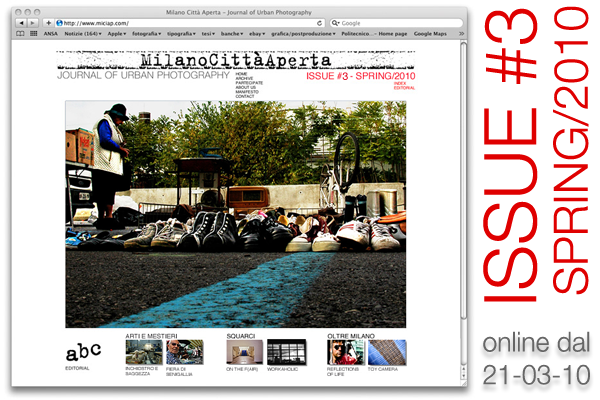EDITORIALE
Milan is defined by the Duomo and Piazza della Scala. More or less, this is what the old postcards that we find on our travels say. Our literature, cinema and those strangers met during a journey tell us that.
Milan is the image of an infinite post-war economical growth that, today, still gives hope for many to dream. A city where the business hub of Piazza Affari lies; where the huge department store of 'La Rinascente' stands with some of the most expensive fashion boutiques and stores in the world.
A tiny centre; the keeper of a major part of Italy's wealth seems to have been born out of nothing from the mist of the Val Padana. This is how the myth of Milan was established in the rest of Italy, along with the most stupid stereotypes in circulation that depict a city of millionaires.
Naturally, Milan isn't just this. Milan is its crown, its less beaten quarters with its urban blights and the little beauties found within its own parameters. Here, other stories that are slowly finding their own literature are told - through cinema, music and photography- still semi unknown amongst a complicated and contradictory city. Gratosoglio, l'Isola, Piazza Brasilia, il Bosco in CittĂ , Santa Giulia. All, however, a part of Milan.
Whether it's needed or not, an urban geography has to be drawn that exceeds the idea of the centre 'caput mundi' and that which takes life, society and work into consideration even where there are lesser optimistic conditions. We should do that without having to build homes for the poor or thinking that the soul of a quarter isn't important. It's fundemental to expose some sense of truth. A house is not enough to live.
Perhaps, it's sufficient enough to take a walk in a park where people are celebrating a Muslim wedding in order to understand the different ethnic backgrounds that populate the city. Perhaps, we should take a walk in a public garden during the evening more often, when everything is still, under the shine of the electric street lights.
In this issue, we tell the story of Milan; it's much bigger than one would think. We'd like those to remember that to forget the extensions of the arms of our city beyond the Bastioni means that we forget its complex geography and all of its history.
Happy reading.


